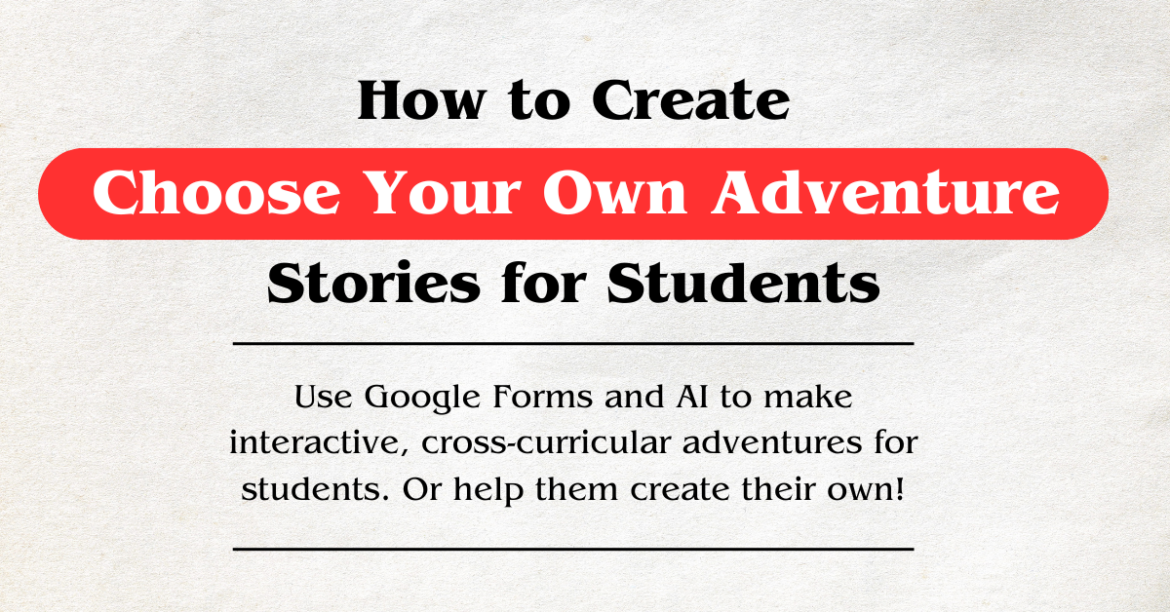

In the nostalgic tapestry of the 1980s and early 1990s, a phenomenon emerged that would capture the imagination of countless young readers – the “Choose Your Own Adventure” (CYOA) series. These interactive books, with their branching narratives and multiple endings, empowered readers to chart their own course through thrilling adventures, from exploring ancient ruins to navigating deep-space mysteries.
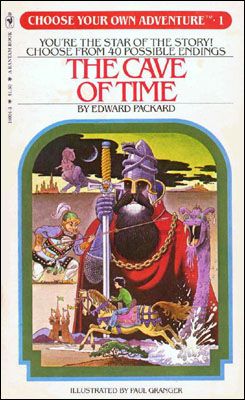
For many, these books were more than just literary escapades; they were portals to alternate realities, sparking a passion for reading and fueling imaginations. In August of 1981, just two years after the CYOA series launched, New York Times columnist Aljean Harmetz wrote that these books “appear to be as contagious as chicken pox.” Jarmetz noted that according to kids, the greatest care package one could receive included “Jordache jeans, whistle pops and an assortment of ‘Choose Your Own Adventure Books”.
As digital media and video games began to rise to prominence, the CYOA concept reemerged in popular video games such as Telltale’s “Walking Dead” as well as TV/Netflix shows like Black Mirror’s “Bandersnatch.”
In the ever-evolving landscape of education, fostering a love for reading and solidifying core literacy skills remains a cornerstone of effective teaching. Across the country, schools are seeking new ways to ignite a passion for reading and promote critical literacy skills. One innovative way is by bringing back the Choose Your Own Adventure concept to the classroom. Here are some of the benefits of using CYOA with students:
Using free tools such as Google Forms, teachers can create their own CYOAs for students. The beauty of CYOA lies in its interactive nature. Students become the protagonists, not just consuming a story but actively shaping its course. Google Forms provides the perfect platform for creating these branching narratives, allowing us to craft engaging experiences that go beyond the limitations of traditional textbooks. Let’s dive into how to build these interactive odysseys and empower students on their own literacy adventures.
The first step is crafting a compelling story. Consider the grade level and curriculum tie-ins. Are you exploring historical periods, fictional worlds, or scientific concepts? Brainstorm a central plot with several decision points where students choose their path. Plan multiple endings, ensuring each choice leads to a satisfying conclusion. Use a mapping template to keep track of your story! This will make the next step much easier.
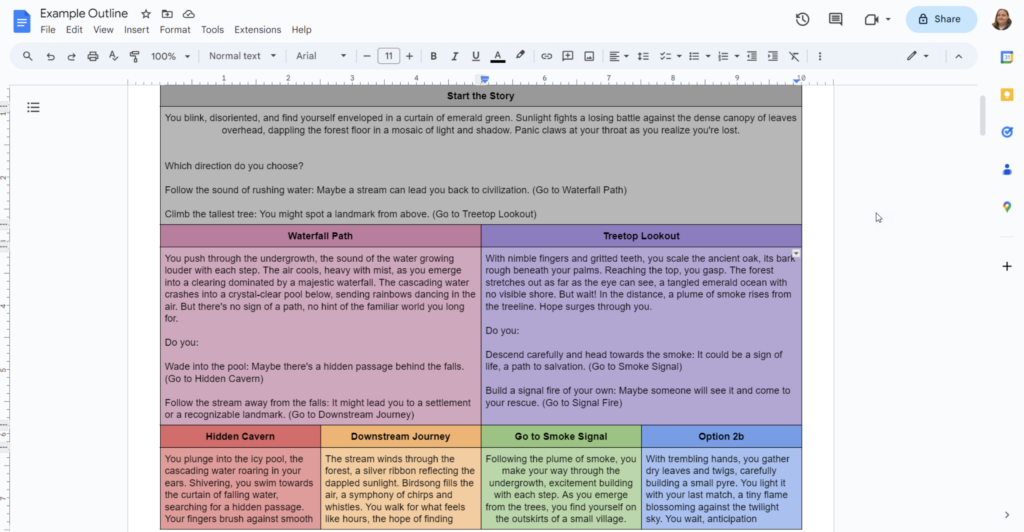
With the explosion of AI tools such as ChatGPT, Gemini, Claude, etc., educators can let AI do all of the heavy lifting in creating branching storylines and endings! In the prompt, make sure to be specific about what you’re looking for, including setting, themes or standards to cover, etc. You can keep customizing the story or elements by interacting with the AI until the storylines are to your liking.
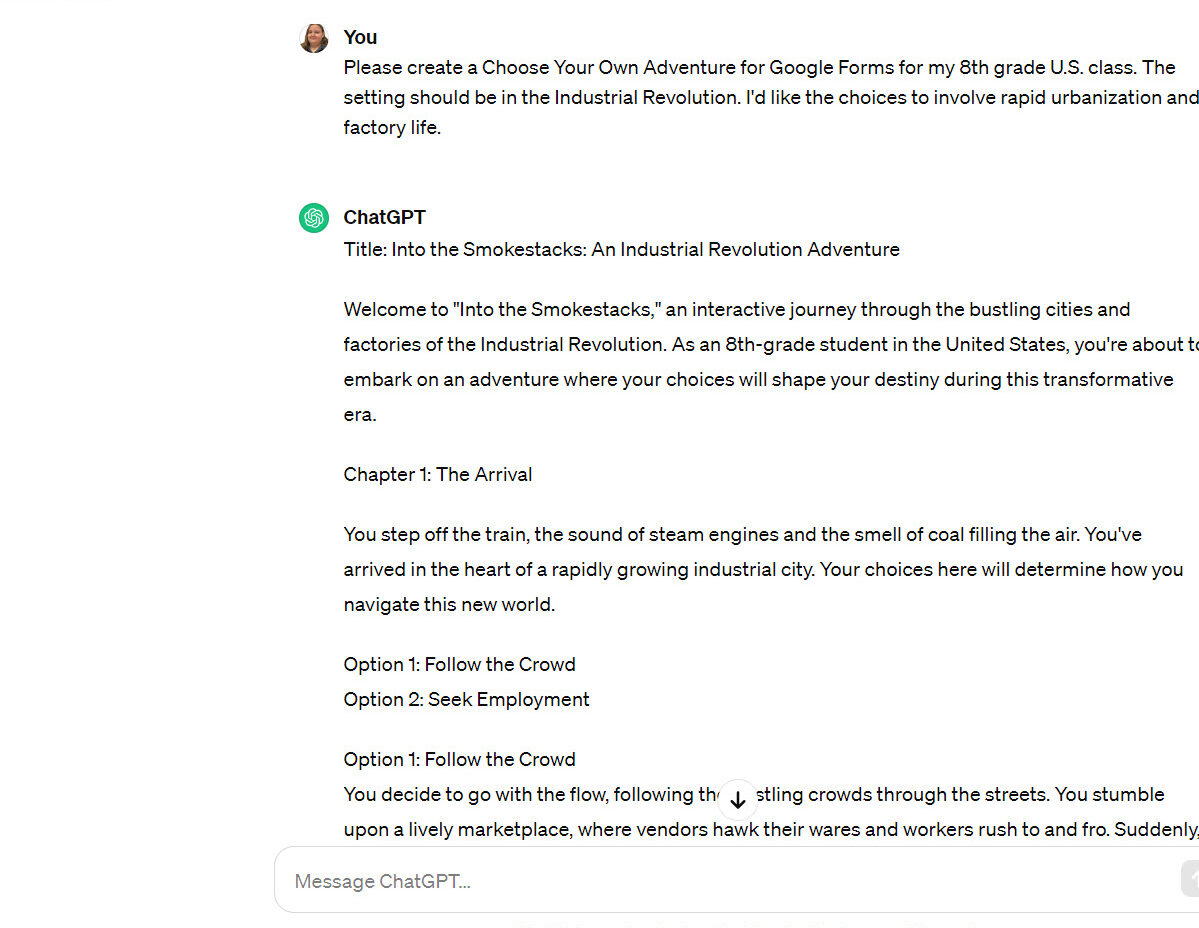
Once the narrative is mapped, head to Google Forms. If you put everything in a mapping template, it will be easy to just copy it over. Begin with an introductory section (1) that sets the scene. Include a captivating image or even a short video clip to hook students. Then, leverage the power of multiple-choice questions (2, 3). Make sure each question is required to be answered in order to keep students on the correct branch (4). Each question presents a crossroads in the story, with answer choices representing different paths. You will need to create sections for each answer choice (5).
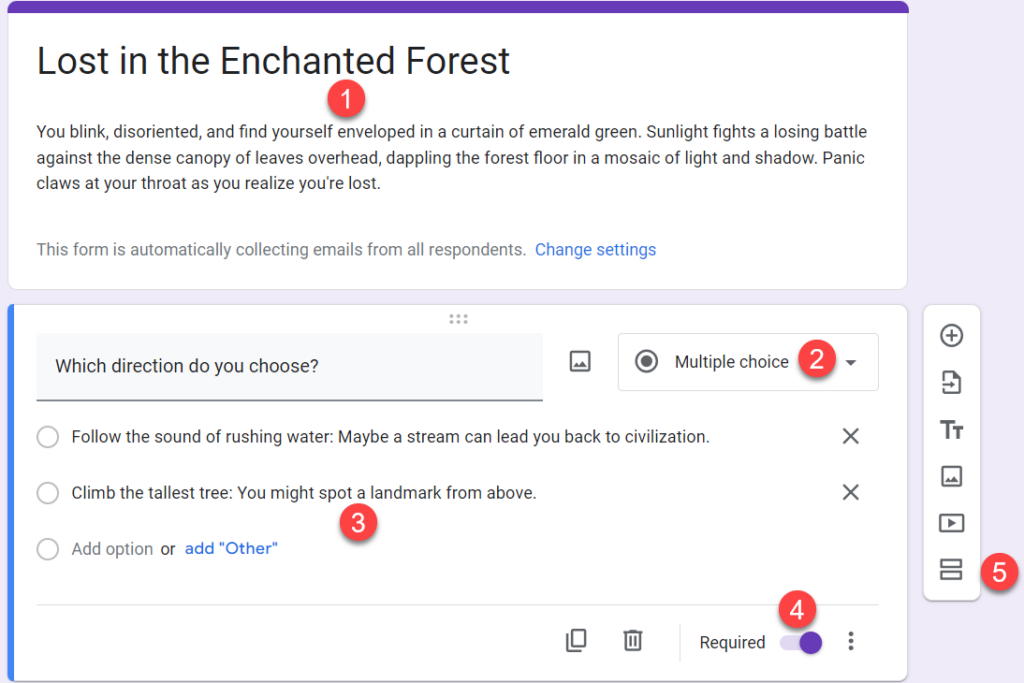
To ensure a smooth transition, label each section (6, 7) according to its role in the story.

Here’s where the magic happens: after you’ve created different sections for each answer choice, utilize the “Go to section based on answer” option found in the three-dot menu (8) of each question.
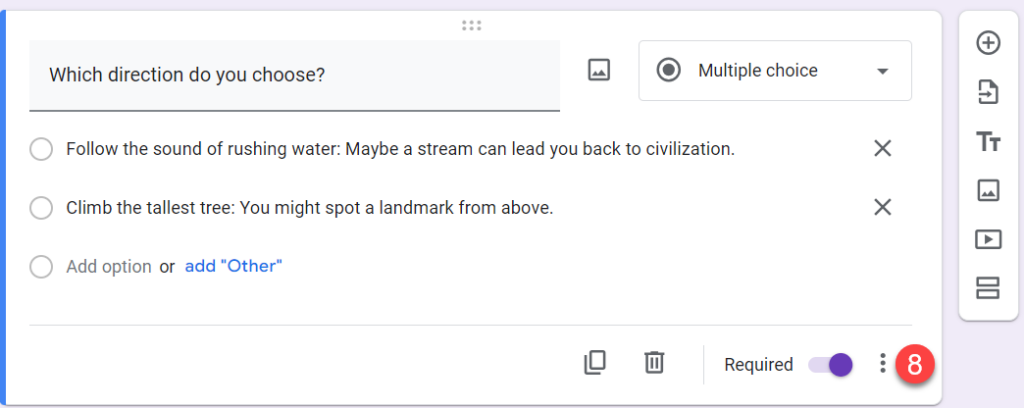
This allows you to link specific answers to the different sections of the form (9, 10), effectively building a branching narrative.
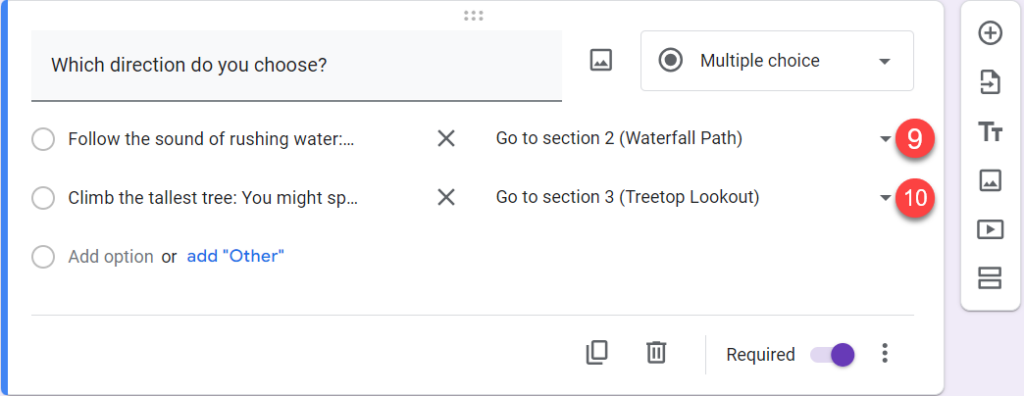
As you are creating your Google Form, test out the branches in preview mode (eye icon in the top right corner) to make sure everything is connected as it should be. When you’ve reached an ending
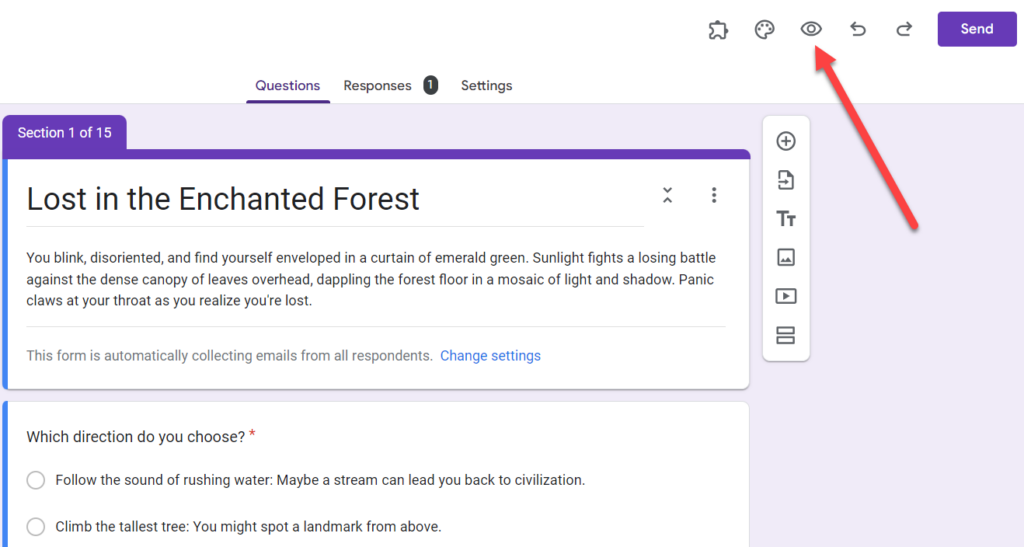
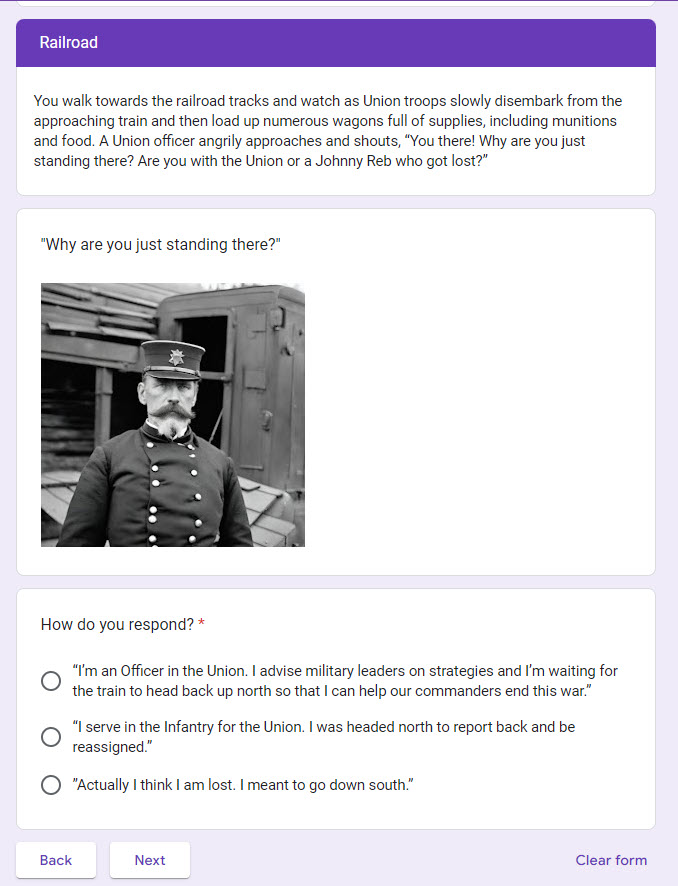
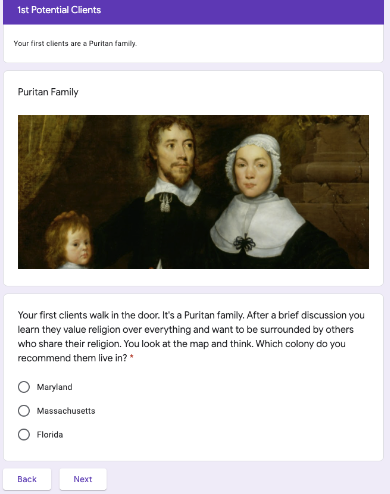
CYOA activities in Google Forms can be further enriched by incorporating multimedia elements. Embed images, audio clips, or even short videos to create a more immersive experience. Tools like Canva offer audio clips, images, and the ability to easily create your own image with Magic Studio using AI.
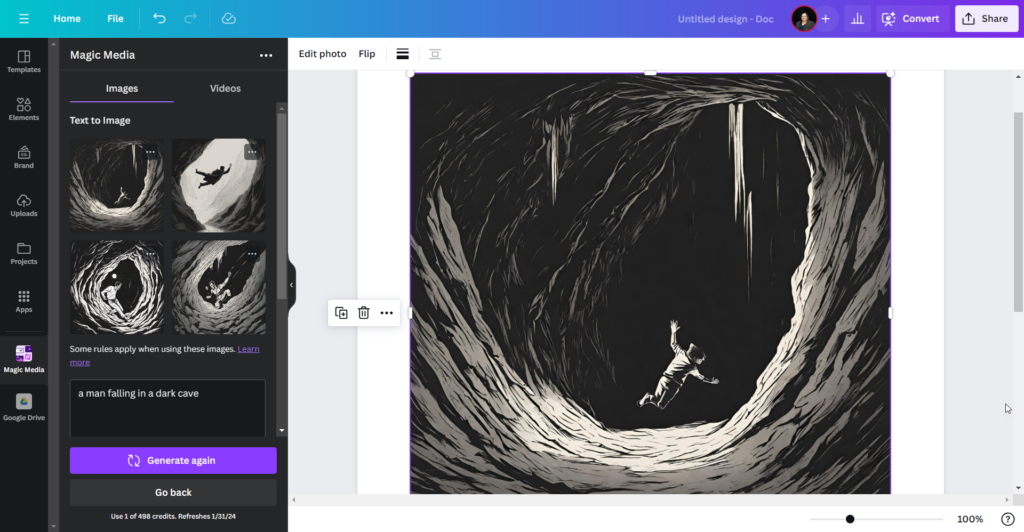
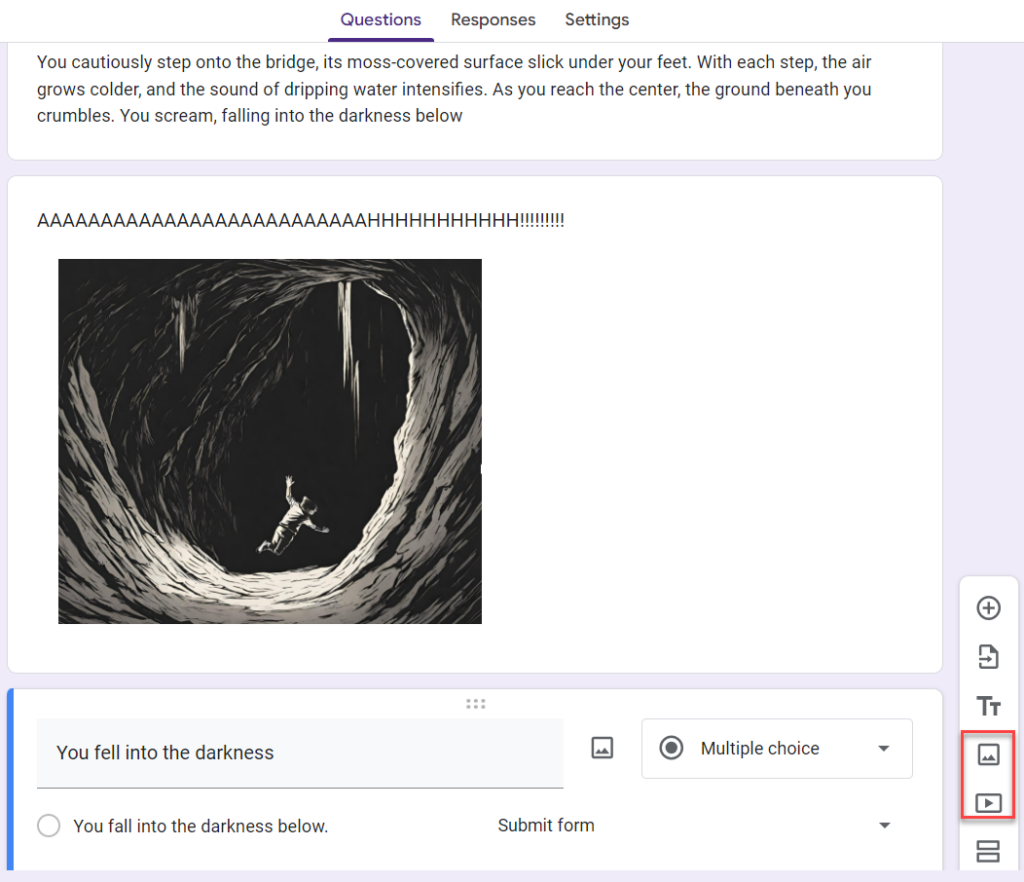
Encourage students to write their own endings by including open-ended questions at specific points in the story. This fosters creativity and allows them to truly personalize their journey.
With your interactive CYOA form ready, it’s time to embark on the learning adventure! Here are some ways to maximize student engagement:
The potential of CYOA with Google Forms extends beyond the classroom. These activities can be adapted for at-home learning, allowing students to continue exploring narratives at their own pace. They can even inspire students to create their own CYOA experiences, further solidifying reading comprehension and creative writing skills.
By harnessing the power of choice and the user-friendly interface of Google Forms, teachers can create engaging CYOA activities that transform reading into a dynamic and interactive experience. These digital adventures not only ignite a passion for literacy but also equip students with essential skills for lifelong learners. So, set sail on your interactive odyssey and watch your students become active participants in their own learning journeys!
Learn more from Belinda Howell at the Elementary Technology Conference (ETC) in Galveston, Texas June 9-11! She will be presenting four sessions with co-presenter, Dan Larson: